PEER REVIEW PROCESS

The peer review process of NAJUA: History of Architecture and Thai Architecture (NAJUA: HATA) involves the following steps:
1. Submission
Authors submit the manuscript file, along with figures and tables, and complete the necessary information using the ThaiJO system.
2. Initial Editorial Review
The editorial board reviews the manuscript to ensure it aligns with the journal’s aims and scope. The manuscript must include all necessary sections and be presented clearly and concisely, adhering to the Author Guidelines. Incomplete manuscripts will not be considered, and authors will be notified through the ThaiJO system.
3. Peer Review
The editorial board appoints three reviewers from different institutions than that of the author to evaluate the manuscript through a double-blind review process. If at least two of the reviewers approve the manuscript, it will advance to the next stage; otherwise, it will be rejected. The review process can result in three possible outcomes:
- Acceptance without revision.
- Acceptance with requested revisions.
- Rejection.
The review outcomes will be communicated to the author via the ThaiJO system.
4. Revision
If the manuscript is conditionally accepted, authors may need to revise it based on the reviewers' recommendations. The revised manuscript, along with necessary materials such as figures and tables, should be submitted with clear indications of the changes made. If authors disagree with minor or major comments from the reviewers, they must provide reasonable explanations. The editorial board may submit the manuscript for re-review by 1-2 experts if necessary. The journal reserves the right to reject the manuscript if the author fails to address the recommended revisions adequately.
5. Final Editorial Review
The editorial board reviews the manuscript for typographical errors. Inquiries or suggestions from the editorial board will be communicated to the author for confirmation. The editorial board retains the right to make amendments related to the journal’s layout, writing style, and reference format without prior notification to the author. Authors may be contacted for further information or verification during this period, which may delay the duration of manuscript revision.
6. Editorial Decision
The Editor-in-Chief makes the final decision.
7. Copy Editing & Artwork
Copy editing and artwork preparation by the journal (1 week per article, in the order of completion from the previous stage).
8. Proofreading & Final Correction
Proofreading and final corrections (1 week per article, in the order of completion from the previous stage).
9. Publication
The entire process from initial submission to publication takes approximately 4-5 months.

